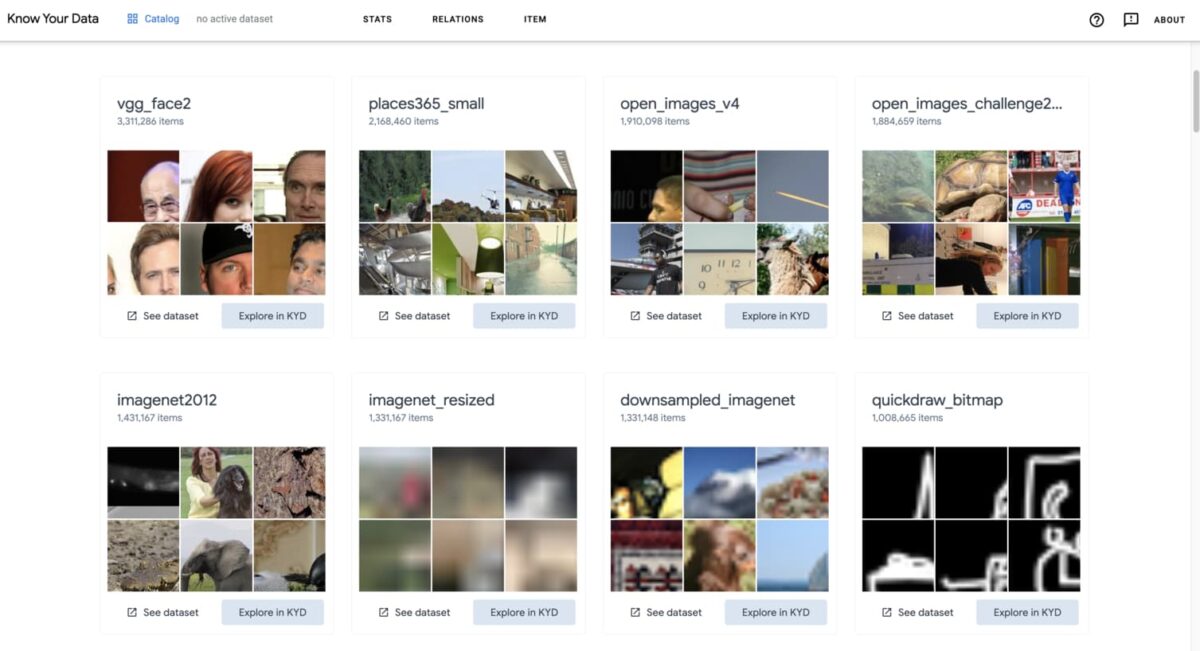Introduction: The digital age has ushered in an era where data is the new currency, and in the realm of machine learning and artificial intelligence (AI), the value of high-quality image datasets is unparalleled wellhealth how to build muscle tag. As a data annotation company at the forefront of technological advancement, understanding the nuances of image dataset collection is critical. This comprehensive guide delves into the intricacies of collecting, processing and utilizing image datasets to power AI and machine learning algorithms.
The Foundation of AI: Understanding Image Dataset Collection:
- Explain what image dataset collection entails, its significance in training AI and ML models, particularly in fields like computer vision and facial recognition.
- Discuss different types of image datasets, such as annotated and non-annotated, and their respective applications in various AI models.
- Highlight the importance of a diverse and comprehensive dataset in creating unbiased, representative AI models.
Best Practices for Effective Image Dataset Collection:
- Delve into the best practices for collecting image data, emphasizing the importance of high-quality, clear images.
- Discuss the need for ensuring diversity in datasets to prevent biases in AI models. This includes varied demographics, environments, and scenarios.
- Address the ethical considerations, such as privacy concerns, consent, and compliance with data protection laws, that must be taken into account during the dataset collection process.
Navigating Challenges in Image Dataset Collection:
- Discuss the challenges faced during image dataset collection, such as dealing with data biases, ensuring data privacy, and navigating legal constraints.
- Offer solutions and strategies for overcoming these challenges, ensuring the dataset is not only comprehensive but also compliant and ethical.
- Addressing Data Bias: Offer solutions for identifying and mitigating bias in image datasets.
- Navigating Privacy and Legal Issues: Delve into the complexities of data privacy, copyright laws, and the importance of compliance.
- Adapting to Technological Changes: Discuss the need to continuously update datasets to reflect technological advancements and societal changes anonib.
Looking Ahead: Future Trends in Image Dataset Collection:
- Predict future trends in image dataset collection, considering advancements in AI and ML technologies.
- Discuss the growing role of crowdsourcing in data collection and how it can contribute to more diverse and extensive datasets.
- Speculate on the potential technological innovations that could revolutionize image dataset collection in the coming years.
- Emerging Technologies: Speculate on how advancements in AI and machine learning are shaping the future of image dataset collection.
- The Growing Role of Crowdsourcing: Examine how crowdsourcing is revolutionizing data collection by contributing to the diversity and volume of datasets.
- Predictions and Innovations: Offer insights into potential future developments and innovative approaches in image dataset collection.
- Emerging Technologies in Data Collection: Speculate on future technologies that could revolutionize dataset collection.
- The Rising Role of Crowdsourcing: Explore how crowdsourcing is being used to gather diverse and extensive datasets.
- Predictions for the Field: Provide insights into what the future might hold for image dataset collection.
Best Practices for Image Dataset Collection:
The quality of an AI model is only as good as its training dataset. Here are some best practices:
Ensuring High-Quality Images: The resolution, clarity, and variability of images are paramount. High-quality images lead to more accurate AI models.
Diversity and Representation: To build unbiased AI models, datasets must represent diverse scenarios, environments, and subjects high risk merchant account at highriskpay.com.
Ethical Data Collection: Adhering to ethical standards, respecting privacy, and ensuring data is collected with consent is crucial.
Understanding Image Dataset Collection:
Image dataset collection is more than just gathering a series of pictures; it’s a meticulous process of creating a foundation for machine learning models. These datasets are used in various applications, from facial recognition to autonomous vehicles. Each image in a dataset serves as a learning example for AI models. Therefore, the diversity, quality, and relevance of these images directly impact the effectiveness of AI applications.
The Importance of Image Dataset Collection in AI: Image dataset collection isn’t just about gathering photographs or graphics; it’s a meticulous process that involves sourcing, annotating, and refining visual information to train AI models. These datasets form the foundation upon which AI systems learn, make decisions, and evolve. From facial recognition software to autonomous vehicle navigation, the applications are vast and constantly expanding.
Best Practices for Effective Dataset Collection: Achieving the highest quality in image datasets is paramount. This involves ensuring high-resolution images, diversity in the data to reflect various scenarios and environments, and adherence to ethical standards. The aim is to create datasets that are not only vast but also nuanced and representative of real-world conditions.
Tools of the Trade: In the world of image dataset collection, tools are your best ally. From sophisticated data scraping software to advanced image annotation tools, the right technology can streamline the process, enhance accuracy, and save invaluable time. Additionally, efficient data storage and management systems are crucial for handling large volumes of image data.
Overcoming Challenges: Despite the best tools and practices, challenges such as data bias, privacy concerns, and legal constraints are ever-present. Navigating these challenges requires a keen understanding of both technology and regulation. Balancing the need for comprehensive datasets with ethical data collection practices is not just a requirement but a responsibility.
Looking Ahead: Future Trends and Innovations: As technology evolves, so do the methods and tools for image dataset collection. AI-driven data collection methods, the growing role of crowdsourcing for diverse data, and the continuous innovation in data annotation and processing tools are shaping the future of this field. Staying ahead means not just keeping up with these trends but actively engaging in their development wellhealthorganic home remedies tag.
Conclusion: The journey through image dataset collection is one of constant learning and adaptation. For AI and machine learning to reach their full potential, the foundation must be laid with robust, diverse, and ethically gathered image datasets. As experts in data annotation, embracing these challenges and innovations isn’t just an option; it’s imperative for driving the future of AI. Conclude the blog by summarizing the key points discussed. Reinforce the importance of image dataset collection in the broader context of AI and ML development. End with a call to action, encouraging readers to consider the importance of high-quality image dataset collection and how it can be leveraged for the advancement of AI technologies.



